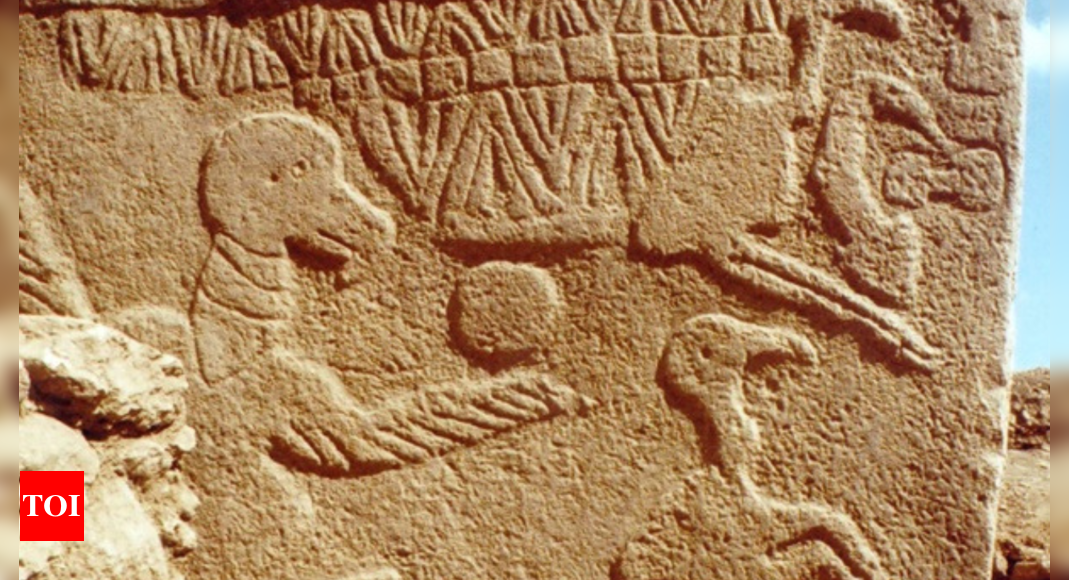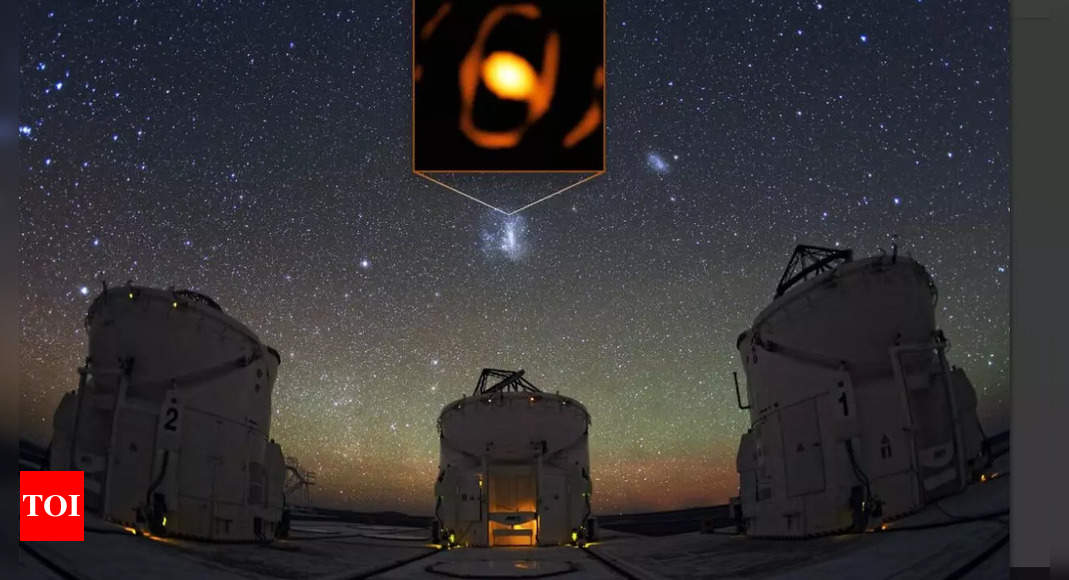
A researcher at the University of Edinburgh has discovered what he believes to be the earliest lunisolar calendar at Göbekli Tepe, an ancient site in southern Turkey that was once a complex of temple-like enclosures.
According to The New York Times, Martin Sweatman, a scientist at the University of Edinburgh, announced his findings in research published last month.According to Sweatman, V-shaped markings on the calendar document a significant astronomical event, a comet impact roughly 13,000 years ago, that had a profound effect on Earth, effectively making the ancient pillar a type of memorial.
Dr Sweatman explained that the detailed carvings at Göbekli Tepe tell the story and date of the comet fragments, which struck Earth around 10,850 BC. This event has been a point of contention among researchers. The comet strike is thought to have triggered a 1,200-year ice age and led to the extinction of many large animals. For humans, this cataclysmic event likely resulted in lifestyle changes and advances in agriculture, paving the way for the rise of civilisation.
In 2017, Dr Sweatman had previously linked the impact of the comet to the site in Turkey in an academic paper, where he suggested that the carvings at Göbekli Tepe were memorialised on the pillars and that the site was used for astronomical observations.
However, at that time, a team of excavators at Göbekli Tepe challenged these findings. Jens Notroff, an archaeologist who commented on the excavators’ website, was sceptical of the new findings and questioned the symbolic meanings of the markings. He expressed on the social media platform X that there was “an obsession with the idea that there ‘must’ be a secret, a hidden code which needs to and can be decoded, while it’s really just about past humans living their lives.”
Dr Sweatman believes that his recent discovery—showing that one of the pillars also depicts a lunisolar calendar and records the day of the comet impact—aligns with his earlier research.
“We can be very confident indeed that it’s a date,” he said.
Sweatman’s research suggests that ancient people were capable of recording their observations of the sun, moon, and constellations using a solar calendar to keep track of time and mark seasonal changes.
Imagining the scene when ancient humans inscribed these symbols is challenging, but it does provide insights into the importance of this event for them.
“What it suggests,” Dr Sweatman said, “is that this event was important to them.”
Although Dr Sweatman has extensively studied the symbols at Göbekli Tepe, the recent breakthrough stemmed from a tip. Someone emailed him, proposing that the V-shaped symbols on the pillar could represent the lunar cycle.
“I had not spotted that myself before,” he said. “I had always wondered what these boxes and V-symbols might mean.”
According to Dr Sweatman’s findings, each V-shaped symbol could signify a single day.
“This interpretation allowed researchers to count a solar calendar of 365 days on one of the pillars, consisting of 12 lunar months plus 11 extra days,” the research states.
The final V on the pillar is “represented by a V worn around the neck of a birdlike beast thought to represent the summer solstice constellation at the time,” according to the research. Other nearby statues, potentially depicting deities, also bear similar markings.
Dr Sweatman noted that everything aligned after interpreting the V-shaped symbols in this way.
“The carvings suggest that ancient people were able to record their observations of the sun, moon and constellations in the form of a solar calendar, created to keep track of time and mark the change of seasons,” he said.
While understanding the exact mindset of ancient humans may remain elusive, these findings offer clues about the significance they placed on astronomical events.
Dr Sweatman emphasised that this event was of great importance to the people of that era, as indicated by their detailed and deliberate carvings.
According to The New York Times, Martin Sweatman, a scientist at the University of Edinburgh, announced his findings in research published last month.According to Sweatman, V-shaped markings on the calendar document a significant astronomical event, a comet impact roughly 13,000 years ago, that had a profound effect on Earth, effectively making the ancient pillar a type of memorial.
Dr Sweatman explained that the detailed carvings at Göbekli Tepe tell the story and date of the comet fragments, which struck Earth around 10,850 BC. This event has been a point of contention among researchers. The comet strike is thought to have triggered a 1,200-year ice age and led to the extinction of many large animals. For humans, this cataclysmic event likely resulted in lifestyle changes and advances in agriculture, paving the way for the rise of civilisation.
In 2017, Dr Sweatman had previously linked the impact of the comet to the site in Turkey in an academic paper, where he suggested that the carvings at Göbekli Tepe were memorialised on the pillars and that the site was used for astronomical observations.
However, at that time, a team of excavators at Göbekli Tepe challenged these findings. Jens Notroff, an archaeologist who commented on the excavators’ website, was sceptical of the new findings and questioned the symbolic meanings of the markings. He expressed on the social media platform X that there was “an obsession with the idea that there ‘must’ be a secret, a hidden code which needs to and can be decoded, while it’s really just about past humans living their lives.”
Dr Sweatman believes that his recent discovery—showing that one of the pillars also depicts a lunisolar calendar and records the day of the comet impact—aligns with his earlier research.
“We can be very confident indeed that it’s a date,” he said.
Sweatman’s research suggests that ancient people were capable of recording their observations of the sun, moon, and constellations using a solar calendar to keep track of time and mark seasonal changes.
Imagining the scene when ancient humans inscribed these symbols is challenging, but it does provide insights into the importance of this event for them.
“What it suggests,” Dr Sweatman said, “is that this event was important to them.”
Although Dr Sweatman has extensively studied the symbols at Göbekli Tepe, the recent breakthrough stemmed from a tip. Someone emailed him, proposing that the V-shaped symbols on the pillar could represent the lunar cycle.
“I had not spotted that myself before,” he said. “I had always wondered what these boxes and V-symbols might mean.”
According to Dr Sweatman’s findings, each V-shaped symbol could signify a single day.
“This interpretation allowed researchers to count a solar calendar of 365 days on one of the pillars, consisting of 12 lunar months plus 11 extra days,” the research states.
The final V on the pillar is “represented by a V worn around the neck of a birdlike beast thought to represent the summer solstice constellation at the time,” according to the research. Other nearby statues, potentially depicting deities, also bear similar markings.
Dr Sweatman noted that everything aligned after interpreting the V-shaped symbols in this way.
“The carvings suggest that ancient people were able to record their observations of the sun, moon and constellations in the form of a solar calendar, created to keep track of time and mark the change of seasons,” he said.
While understanding the exact mindset of ancient humans may remain elusive, these findings offer clues about the significance they placed on astronomical events.
Dr Sweatman emphasised that this event was of great importance to the people of that era, as indicated by their detailed and deliberate carvings.









